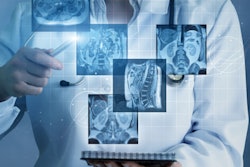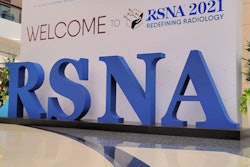
The COVID-19 pandemic has caused anxiety and workplace-related stress among radiologic technologists (RTs), according to a study conducted by U.K. researchers and published July 12 in Radiography.
The crisis changed clinical practice in terms of working patterns and workload, and many RTs (known as radiographers in the U.K.) didn't receive necessary training for caring for COVID-19 patients, wrote a team led by Theophilus Akudjedu, PhD, of Bournemouth University in Poole, England.
"[Our] review provides a global snapshot of the pandemic's impact on clinical radiography practice across different settings of varied resource availability," the group wrote. "Worldwide, most radiographers received inadequate training to specifically manage COVID-19 patients during the initial acute phase of the pandemic."
In the initial, acute phase of the pandemic, chest x-ray emerged as a key tool for diagnosing COVID-19, and radiology staff experienced a surge in exam volume that prompted reorganization of imaging departments and changes in workflow and procedures, the researchers noted.
"In some settings, additional radiography practice modifications were required to reduce cross-infection, such as x-raying through room windows with both the digital image receiver/cassette and mobile x-ray machine secured with layers of polythene sheets," they wrote.
Akudjedu's team conducted a study review that included 31 articles found on PubMed, Science Direct, and other sources dated between November 2020 and January 2021. The articles addressed the topic of radiology workforce and service delivery, with subtopics such as training, communication, infrastructure, technology, clinical workflow, and staff mental health.
The group found the following:
- Training about COVID-19 infection control, prevention, and patient management was nonexistent or inadequate. "In part, the lack of training and information was due to the rapid and unexpected evolution of the global pandemic," the authors wrote.
- Workload volume both increased and changed. "In some cases, there were staff redeployments and extended shift hours to cover the increased imaging demand," they noted. "Adapting to the 'new way of work' not only affected professional work dynamics, but it also affected home/family routines and well-being of radiographers."
- Burnout and anxiety were prevalent. "The global radiography workforce populations that responded to the various surveys included in this review reported burnout symptoms, emotional/psychological dilemma, anxiety, and workplace-related stress resulting from fear of contracting the virus, increase and/or changes to clinical workload and workflow," the group wrote.
Is there a silver lining to the crisis? Perhaps, if radiology departments can use the COVID-19 pandemic experience to prepare for healthcare crises going forward, according to Akudjedu and colleagues. They suggested developing new pandemic response strategies, professional development in the form of simulated case scenarios, ensuring availability of resources like personal protective equipment, and adopting new workforce deployment patterns.
"Following the current global pandemic, radiography departments will require extensive re-organization and re-structuring using key lessons from the pandemic in readiness for post-COVID service delivery," they concluded.




















